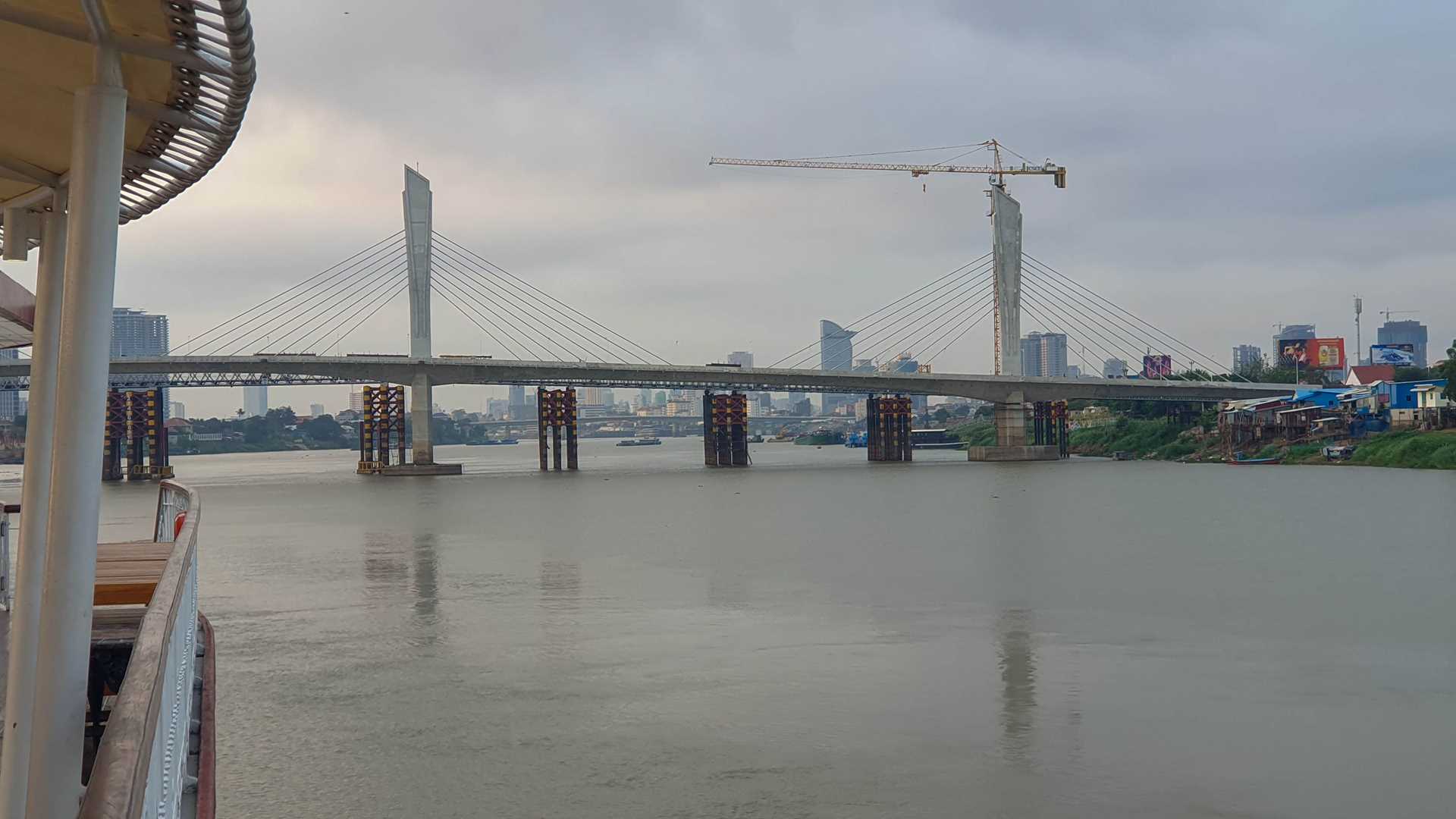This morning, we awoke on the Tonle Sap River just upstream from Phnom Penh, the capital of the Kingdom of Cambodia. Cruising downstream in the cool morning air, early risers enjoyed another session of Tai Chi on the terrace deck. We passed floating houses and some large, stationary fishing platforms, all set amidst banks full of densely populated city suburbs. The high riverbanks resemble a chasm, and the high-water marks illustrate the monsoon inundation and the sharp seasonality of the Mekong’s flow. With well over two million inhabitants, Phnom Penh is a world apart from the rural villages we have visited thus far, or any other part of the Khmer world for that matter.
Disembarking the ship, we boarded our cyclos, single-seater bicycle pedicabs from which the passenger has an unobstructed view. After we meandered along the riverfront of Sisowath Quay, we arrived at the Royal Palace. While this royal residence is rarely occupied by the Cambodian king today, the great coronation hall is still used when they ascend the throne. After exploring the treasures of the Silver Pagoda, we headed across town to Wat Phnom, the eponymous shrine that commemorates the founding of the city.
During the afternoon, we learned about the troubling recent history of Cambodia and the ill-fated Khmer Rouge regime. This took us to the Tuol Sleng Museum, a primary school that became a prison and interrogation center, and to the Cheung Ek memorial on the outskirts of town, where thousands lost their lives on the notorious killing fields.
In the evening, we once again admired the beauty and resilience of the Khmer people. We were treated to a traditional dance performance by the Cambodian Living Arts organization, and we cruised past the colored lights of the Phnom Penh waterfront.







